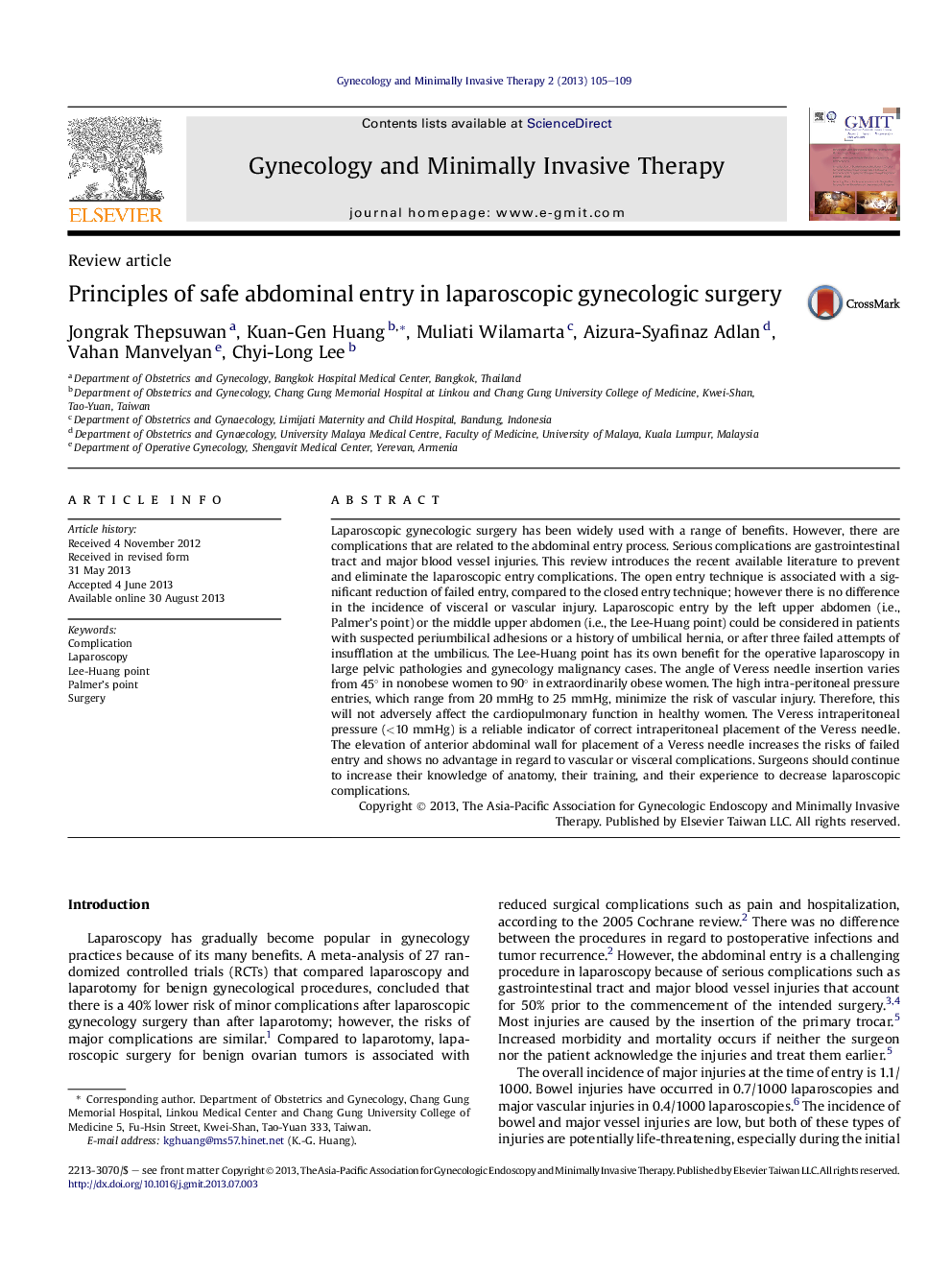| Article ID | Journal | Published Year | Pages | File Type |
|---|---|---|---|---|
| 3953821 | Gynecology and Minimally Invasive Therapy | 2013 | 5 Pages |
Laparoscopic gynecologic surgery has been widely used with a range of benefits. However, there are complications that are related to the abdominal entry process. Serious complications are gastrointestinal tract and major blood vessel injuries. This review introduces the recent available literature to prevent and eliminate the laparoscopic entry complications. The open entry technique is associated with a significant reduction of failed entry, compared to the closed entry technique; however there is no difference in the incidence of visceral or vascular injury. Laparoscopic entry by the left upper abdomen (i.e., Palmer's point) or the middle upper abdomen (i.e., the Lee-Huang point) could be considered in patients with suspected periumbilical adhesions or a history of umbilical hernia, or after three failed attempts of insufflation at the umbilicus. The Lee-Huang point has its own benefit for the operative laparoscopy in large pelvic pathologies and gynecology malignancy cases. The angle of Veress needle insertion varies from 45° in nonobese women to 90° in extraordinarily obese women. The high intra-peritoneal pressure entries, which range from 20 mmHg to 25 mmHg, minimize the risk of vascular injury. Therefore, this will not adversely affect the cardiopulmonary function in healthy women. The Veress intraperitoneal pressure (<10 mmHg) is a reliable indicator of correct intraperitoneal placement of the Veress needle. The elevation of anterior abdominal wall for placement of a Veress needle increases the risks of failed entry and shows no advantage in regard to vascular or visceral complications. Surgeons should continue to increase their knowledge of anatomy, their training, and their experience to decrease laparoscopic complications.
